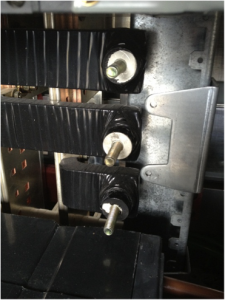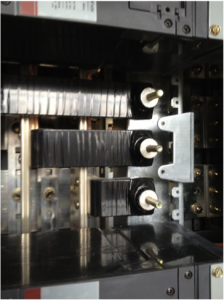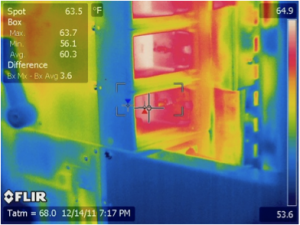“Today’s temperature ‘extremes’ are simply yesterday’s extremes warmed up a bit, partly from the heat-island effect. But they are not new events…. Hansen’s push on weather extremes is another case where the level of alarm is disproportionate to the level of impact.”
Today’s temperature “extremes” are simply yesterday’s extremes warmed up a bit, partly from the heat-island effect. But they are not new events where none existed prior.
This distinction is neither subtle nor unimportant. When it comes to temperatures, yesterday’s extremes warmed up offer less of a surprise (and hence a greater ease of adaptability) than if a new crop of extreme events suddenly sprung up out of nowhere to catch us unprepared.
But such a distinction is not made prominently evident in the latest work by NASA’s James Hansen—and even less so in the accompanying media coverage (including that instigated by Hansen himself). Instead, the general audience is left with the distinct impression that anthropogenic global warming (as a result of greenhouse gas emissions from fossil fuel-based energy production) is leading to the occurrence of new extreme weather events when and where such weather events would not otherwise have occurred. For instance, in a Washington Post op-ed written by Hansen to accompany the release of his paper recently published in the Proceedings of the National Academy of Sciences, Hansen writes:
Our analysis shows that it is no longer enough to say that global warming will increase the likelihood of extreme weather and to repeat the caveat that no individual weather event can be directly linked to climate change. To the contrary, our analysis shows that, for the extreme hot weather of the recent past, there is virtually no explanation other than climate change.
The deadly European heat wave of 2003, the fiery Russian heat wave of 2010 and catastrophic droughts in Texas and Oklahoma last year can each be attributed to climate change. And once the data are gathered in a few weeks’ time, it’s likely that the same will be true for the extremely hot summer the United States is suffering through right now.
But this impression is untrue. These events and others like them, almost certainly would have occurred on their own (i.e., naturally). Climate change may have added a pinch of additional heat, but it almost certainly did not create these events out of thin air (see here for example).
But Hansen pushes this impression with his analogy of “Climate Dice.” The idea is that anthropogenic greenhouse gas emissions have “loaded” the dice towards extreme warmth, so now when Mother Nature rolls the dice for summer weather, there is better chance of rolling a heat wave, or an overall hot summer—events discreet from events that were contained on the unloaded dice.
But Hansen’s hot summers are not new discreet events at all. Instead, they are the naturally occurring hot summers with a few extra degrees added to them. The extra couple of degrees push some summers over an arbitrarily defined threshold temperature above which Hansen classifies them as being “extreme.”
Hansen’s threshold between a “normal” summer and an “extreme” summer has no physical meaning—instead it is rooted in statistics. While certainly some temperature thresholds exist that have physical meaning—like the 32°F, the freezing/melting point of water/ice—none exist in the range of temperatures which characterize summer across much of the globe. Whether or not the average summertime temperature is greater or less than some arbitrary value is of little practical significance.
Washington, D.C. Example
Let’s take the nation’s capital as an example. The mean summer (June through August) temperature in DC during the 30 year “base” period used by Hansen (1951-1980) was 77.0°F. The standard deviation—a statistical measure of the amount of year-to-year variability that exists about the average—was 1.2°F. Statistically, 67% of all values lie within one standard deviation of the mean.
For Washington DC, it means that 2/3rds of summers between 1951 and 1980 should have had an average temperature between 75.8°F and 78.2°F. Again, statistically speaking, 95% of all average summer temperatures should lie within two standard deviations, or between 74.6°F and 79.4°F. And less than one-half of 1% of all summer average temperatures should lie outside three standard deviations from the mean.
Hansen defines an “extreme” summer as one that is hotter than 3 standard deviations above the mean. So, for Washington DC that would mean a summer with an average temperature greater than 80.6°F—a situation that would almost never occur in the climate of 1951-1980 in DC.
Now let’s fast forward to the climate of the most recent 30 years. During the period from 1983-2012, the average summer temperature was 78.0°F—a full degree higher than it was during the base period. And, two summers (2009 and 2010) exceeded 80.6°F (that is, were more than 3 standard deviations above the 1951-1980 average). By Hansen’s reckoning, these were global warming induced climate “extremes.”
But are these hot summers entirely caused by global warming (or rather, climate change)?
If we went back and added 1°F to each summer from 1951 to 1980, one of them would have exceeded three standard deviations, and several others would have been close. In other words, the current climate of DC is pretty similar to the past climate of DC, just warmed up a bit. It is not a completely new climate replete with a different array of extreme events conjured up by human greenhouse gas emissions.
So yes, it is true that summers in DC are hotter than they once were. But local land-use changes (the increased heat-island effect) largely to blame.
Compared to past climates, more summers now meet Hansen’s arbitrary definition of being “extremely” hot. But climate warming is not responsible for all the heat, instead it just adds some warmth to what would have been a hot summer anyway.
Certainly, the hotter it is in DC, the more air conditioners run and other costs incur as well. And quite possibly, the costs increase in some non-linear fashion (see here for a discussion). But, it is almost certain as well that the costs do not rise anywhere near as swiftly as the tally of events crossing some arbitrary threshold by which to define and “extreme” event.
Hansen’s push on weather extremes is another case where the level of alarm is disproportionate to the level of impact.
Source: http://www.masterresource.org/2012/09/unloading-hansens-climate-dice/
electrical business electrical technician master electricians electrical construction electrical works











 Getting the most out of your laundry room starts with the right lighting fixtures from your
Getting the most out of your laundry room starts with the right lighting fixtures from your  As a licensed electrical contractor in Miami and South Florida that has been in business for many years, we handle the entire spectrum of electrical services. While some smaller electrical companies may not be able to handle certain jobs or not have the staff or expertise to make it happen, we do it all!
As a licensed electrical contractor in Miami and South Florida that has been in business for many years, we handle the entire spectrum of electrical services. While some smaller electrical companies may not be able to handle certain jobs or not have the staff or expertise to make it happen, we do it all!
_3.jpg)